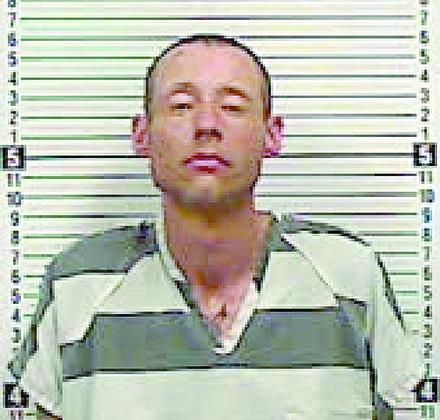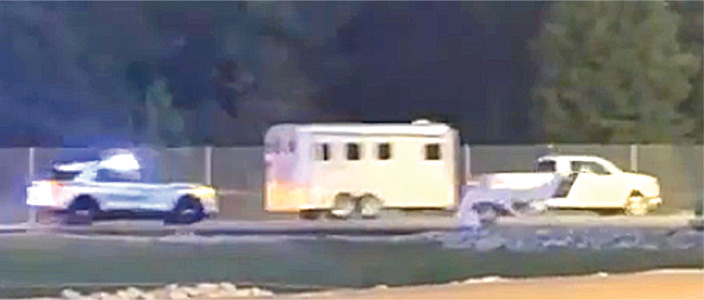For we 50-somethings (and older), we lived through the era of Apollo.
A scant three weeks after Alan B. Shepard’s Freedom 7 spaceflight, which reached an altitude of 115 miles and landed 300 miles downrange from Cape Canaveral, President John F. Kennedy made a bold pronouncement.
He told Congress that this nation should commit itself to achieving the goal of putting a man on the moon and returning him safely to the Earth and do it before the decade ends. Consider that Shepard’s flight lasted only 15 minutes and 22 seconds. Meanwhile, the Soviets were orbiting men, and women, right and left.
Some folks thought such an endeavor was abject lunacy, including those in the newly-formed National Aeronautic and Space Administration. There was no real plan, some of the materials and technology hadn’t even been invented yet.
Guess what? They did it. And the rest is history.
Sure, we, in our mid-to-late 50s, or older, will remember it well and will remember it as an exciting time. And it was exciting, to be sure.
For me, it was especially exciting.
When I was 7, my family moved from New Jersey to the Space Coast of Florida. Thirty miles from the end of our driveway, Apollo 8 stood, poised to go to the moon. I may be the only person in West Tennessee who watched every Apollo lunar mission (and all four Skylab launches) fly with my own two eyes, live and in person.
I always have been fascinated with the space program and all things that fly. The fact that we lived five miles from an airport and 10 miles from an Air Force base further enhanced my excitement. We had jetliners flying over our house going east and west and front-line military aircraft flying north and south. Add to that the activity at the space center and it’s a wonder I passed the second grade.
I remember sitting in my new school thinking about what they had to be doing at the Cape. The space program and the lunar exercises were part of our culture. The Melbourne, Fla. area was a technological community. Most of the adults in the area either worked at a semiconducter plant (where they were pioneering computer chips) or at the space center. We all felt part of the lunar program.
Jim Rathmann, who won the Indianapolis 500 in 1960, lived on our street and owned a Chevrolet-Cadillac dealership in Melbourne, Fla., just across the river from his house. He befriended Shepard, Gus Grissom and Gordon Cooper and started a program where he provided astronauts and their wives new vehicles. The astronauts all drove Corvettes. That was just part of how people took part in the lunar excitement.
About two miles south of my house in a little town called Melbourne Beach (boyhood home and current residence of Doug Flutie), there was a famous steak restaurant called The Melbourne Beach Steakhouse. It was run by a Cuban refugee named “Gomez.” I don’t know if I ever knew his full name. He was an effervescent sort and was very customer friendly.
His steaks were the best. He had his own steak sauce and salad dressing and his duchess potatoes should belong in their own food group. The eatery’s reputation was well known and during the run up to a launch, you might see Walter Cronkite having a meal in there.
That was crazy.
You might even see an astronaut or two on the beach, in a shopping mall or a restaurant. One afternoon, we were seated at a table next to Pete Conrad, Apollo 12 commander and the third man to walk on the moon. He was a nice guy.
The bottom line is that whole Florida Space Coast was bristling with electricity. All the boys in my neighborhood had spacesuits and walkie talkies and we were junior astronauts. You wouldn’t have thought so, but even the girls were into the space hoopla.
I remember the beautiful, clear morning of July 16, 1969, my family loaded up and went the two blocks to the beach near our house and cast our eyes northward toward the launch pad. There was an estimated 1 million people lining the beaches and roads near Canaveral that day. About a thousand or so folks were on our beach and every fifth one had a transistor radio to listen to the reports and the countdown.
Then you heard the three-two-one.
Off they went. The bright orange flame rose into the sky and we were there to see it. These guys were going to the moon! I had just turned 8, but the profound magnitude of the event wasn’t lost on me. The bright flame got smaller and smaller and soon, the altitude took over. A silvery-white contrail eminated from the rocket nozzles as it neared staging.
After about two-and-a-half minutes, the first stage shut down and the second stage fired its engines. It was so clear that day, one actually could see the two pieces separating.
We went home and watched the updates that lasted all day on the news. All week long, there were special bulletins and broadcasts on TV about the mission. That was exciting.
Four days later, Apollo 11 was orbiting the moon and the Eagle undocked from Columbia and headed to the surface. The time it took for them to actually get close seemed agonizingly long. But I’ll never forget Walter Cronkite and Wally Schirra, one of the original astronauts, describing the events.
It was in the mid afternoon when we heard the report: “Houston…Tranquility Base here. The Eagle has landed.”
What a thrill. In just over eight years and with the help of nearly half-a-million people, America sent men to the moon. Seeing the simulation of the lunar module sitting on that ancient plane will forever be burned in my memory.
I recall making a deal with my mom and dad that I’d go to bed early if they woke me up for the moon walk, which was going to commence at 10 p.m. EDT. As promised, they got me up (and truth be told, I don’t know how I actually got to sleep!). I sat on the ottoman, where my foot currently rests, in front of my dad’s chair and watched Neil Armstrong’s ghostly image make its way to the lunar surface.
Then he uttered the words, “That’s one small step for man; one giant leap for mankind.”
Cronkite proclaimed that 38-year-old American Neil Armstrong was standing on the moon. Someone from this planet was stepping on another celestial body. Even at 8 years old, I realized how profound that was.
From that point on, we lived in a world where man had walked on the moon. The fervor may have subsided elsewhere in the nation, but on the Space Coast, it remained at a fever’s pitch until the spectacular night launch of Apollo 17 in December of 1972. The brightness in the midnight sky from those mighty Saturn V engines was intense enough to read a newspaper. And I saw it from my driveway. That was a bittersweet night.
The spirit of mission was palpable. Our nation persevered, figured out how to build such a mighty machine that could transport us to the moon, overcame the tragedy of Apollo 1, redesigned the entire system and still reached the moon before JFK’s deadline.
Project Apollo was a testament to what goal-driven people can do when pulling on the rope together. It wasn’t just about going to the moon. It was about achievement, the fact that this nation, when it can pull together, regardless of ideology, with limited technology, we can do anything. I think Apollo 11 could serve as a message to our leaders on both sides of the aisle today.
Meanwhile, for a little boy with his head in the stars, Apollo filled me with a lifetime of wonderful memories.



